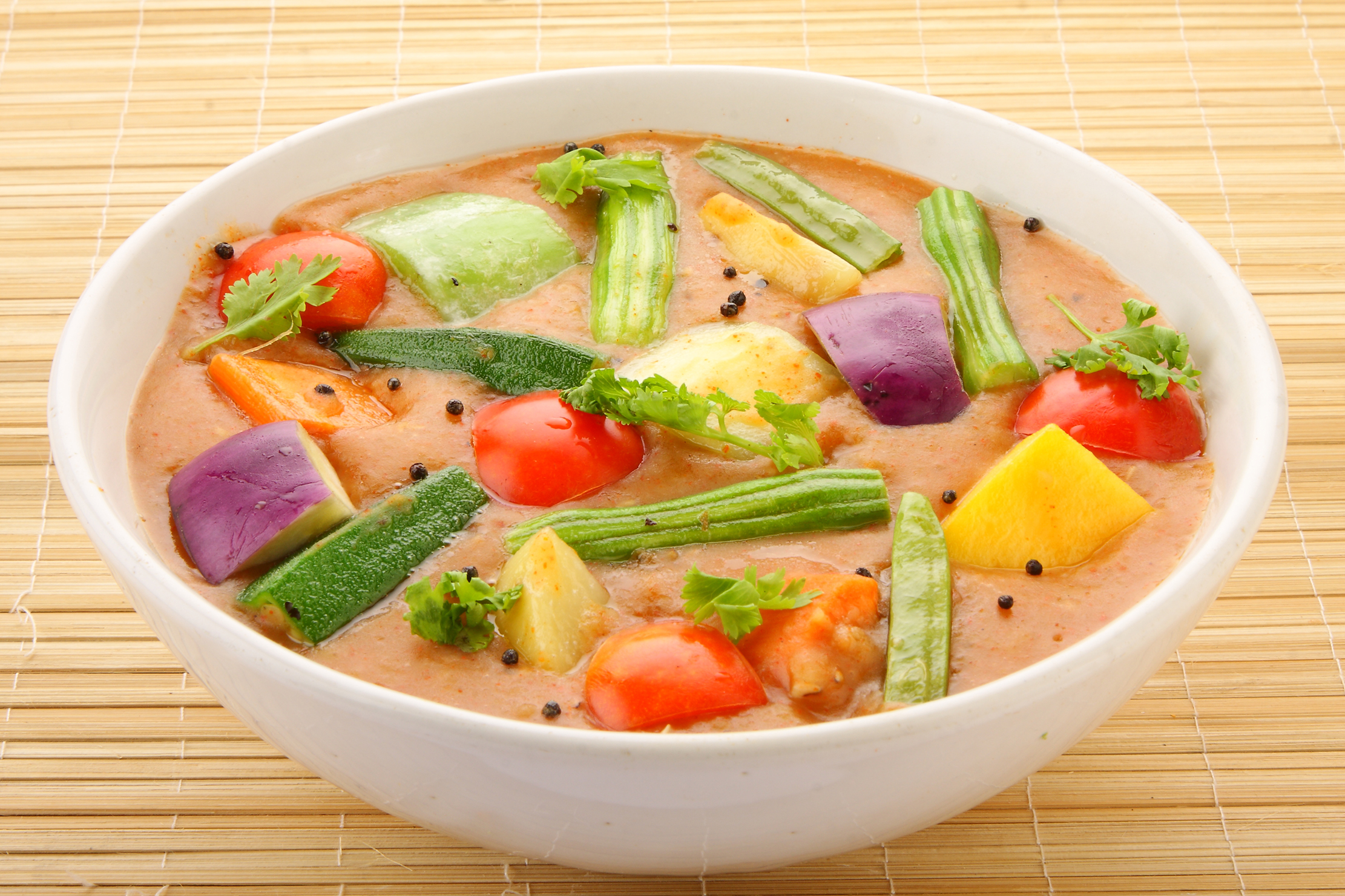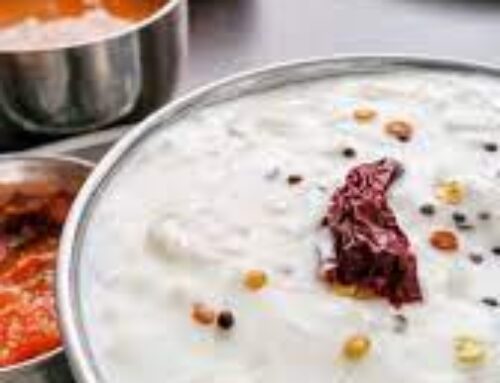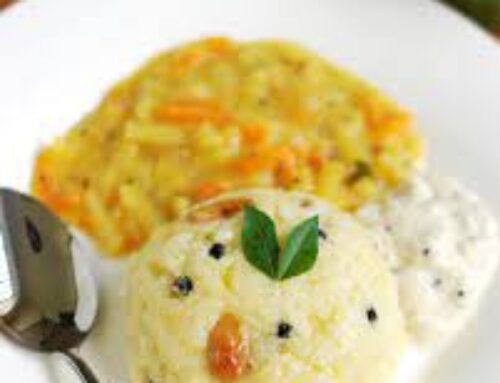Sambar—one of the favorite South Indian dishes—is a kind of thick soup that has pigeon pea lentils, vegetables, tamarind, and a very characteristic sambar powder that gives it its flavor. Sambar, one of the masterpieces of South Indian cuisine, has reached every nook and corner of India.
The basic composition includes cooked lentils with one or two vegetables, tamarind juice, sambar powder, and few other spices. Well, the quality of the sambar depends mainly on the use of the sambar powder, of course. A real aromatic one can make a huge difference. While today, most people are interested in buying ready powder sambar from the shops, its exotic flavor can only be found if prepared at home.
One can get a good number of sambar powders from any online market or Indian grocery store for the uninitiated into the world of Indian cooking and living outside India.
Sambar, in other words, is one of the most nutritious foods; it contains a high source of protein, vitamins, and minerals through its content of lentils and vegetables. Served with rice or idli, it forms a complete meal by itself.
The method that I followed was simple, and yet each time, I always got the needed consistency and doneness of the main ingredients: lentils and vegetables. This follows the style of cooking each main ingredient separately so that the lentils are not undercooked while the vegetables are not overcooked. Some of the vegetables that can be used include drumsticks, okra, pumpkin, carrot, eggplant, French beans, and small onions.
To prepare the sambar, take the dal and cook it until mushy; then, take it off and mash the dal. Take the vegetables and cook them separately. Mix the well-mashed lentil with cooked vegetables, tamarind pulp, and sambar powder, and boil the mixture properly.
This is then tempered with oil or ghee, mustard seeds, curry leaves, asafoetida (hing), and dry red chilies and is stirred into the simmering mixture.
There are regional variations in sambar, which uses quite different spices and other ingredients, bringing out quite a different taste in each type of sambar. In some, there is ground coconut, and spices are used in the sambar even to increase its flavor.
But I seem to cook the vegetables in water, not steam; in so doing, more flavors are being drained, making the broth particularly rich and savory.
Here is the detailed process of how to make the tamarind pulp, cook vegetables and lentils, and finally combine them all to create a delightful, filling sambar.
Preparation and Cooking Lentils
1. Start by soaking 1 tablespoon of tamarind in ⅓ cup of hot water for 20 to 30 minutes before beginning the sambar preparation.
2. Once the tamarind softens, squeeze it within the water and then discard the solids, keeping the tamarind pulp for later use.
3. Rinse ½ cup of tuvar dal (100 grams) thoroughly a few times using fresh water. Employing a strainer might help ensure a good rinse.
Consider soaking the lentils for about an hour before cooking to speed up the cooking process.
Using unpolished tuvar dal is recommended for its superior flavor and nutritional content.
4. After draining the lentils, place them in a 2-liter stovetop pressure cooker and mix in ¼ teaspoon of turmeric powder.
Note: Lentils can also be cooked in a pan or an Instant Pot; adjust the water amount as necessary.
5. Pour in 1.5 to 1.75 cups of water and stir well.
6. Seal the cooker and let the dal cook under pressure for 7 to 8 whistles or about 9 to 10 minutes on medium heat.
7. Once the pressure naturally releases, open the cooker and check the dal, which should be soft and mushy. Mash it with a spoon or whisk and keep it aside.
Cook Vegetables
8. While the dal is cooking, rinse, peel, and chop the vegetables, adjusting the size based on how quickly they cook—for instance, chop fast-cooking vegetables like pumpkin and brinjals into larger pieces, and slow-cooking ones like carrots and potatoes into smaller cubes.
Always chop the brinjals just before cooking to prevent them from turning dark. Prepare about 1 to 1.5 cups of these chopped vegetables.
Note: For optimal taste and health, use fresh vegetables, though frozen ones are an alternative.
9. Place the chopped vegetables in a pot, adding 6 to 7 pearl onions or one small to medium onion sliced thickly and a small to medium tomato quartered.
10. Season with ¼ teaspoon turmeric powder, ¼ teaspoon kashmiri red chili powder (optional for color), and salt to taste.
11. Add 1.5 to 2 cups of water, ensuring it covers the vegetables well.
12. Cook the vegetables on medium-low to medium heat, checking occasionally until they are nearly done but not overcooked.
13. Cook till the vegetables are almost done. Ensure that you don’t overcook the vegetables.
Make Sambar
14. To the nearly cooked vegetables, add the prepared tamarind pulp. Substitute with ½ to 1 tablespoon of tamarind paste if dried tamarind isn’t available, adjusting to taste.
15. Stir thoroughly before adding 1 to 1.5 tablespoons of Sambar Powder and optionally, ½ to 1 teaspoon of jaggery for a hint of sweetness.
The final flavor heavily relies on the quality of the sambar powder used, so choose a high-quality or homemade powder.
16. Mix everything well again and add the mashed dal.
17. Combine thoroughly, adjusting the water if necessary to achieve the desired consistency, but be mindful not to water it down too much.
18. Let the mixture simmer on medium-low heat until it begins to boil, stirring occasionally to see a frothy layer forming at the top.
Once boiling, turn off the heat, cover the pot, and set it aside. Adjust seasoning with salt as needed.
Temper
21. Heat 2 tablespoons of gingelly oil in a small pan or tadka pan, though sunflower oil, ghee, or coconut oil are acceptable substitutes. Add ½ teaspoon of mustard seeds.
22. Allow the mustard seeds to pop over low heat.
23. Then add 1 to 2 halved, seeded dry red chilies.
24. Quickly follow with 10 to 12 curry leaves and 5 to 6 fenugreek seeds, and a couple of pinches of asafoetida (hing), being cautious as the oil may splutter.
Note: For a gluten-free sambar, ensure neither the sambar powder nor the asafoetida contain gluten, or use gluten-free alternatives.
25. Fry until the chilies darken and the curry leaves crisp up, avoiding burning the spices.
26. Immediately pour this tempering over the hot sambar.
27. Cover the sambar for 4 to 5 minutes to allow the flavors and aromas from the tempering to infuse into it.
28. Serve the sambar hot or warm, optionally garnished with coriander leaves. For best flavor, prepare the sambar a few hours ahead of serving as it improves with time.
We recommend serving sambar fresh from the stove, though it pairs wonderfully with steamed rice, idli, dosa, medu vada, or uttapam.
Serving Suggestions
Sambar is typically enjoyed with steamed rice, idli, dosa, medu vadai, or uttapam. Adjust the thickness of the sambar based on what you are serving it with. A thinner consistency is ideal for idli, dosa, and medu vada, while a medium to thick sambar complements steamed rice well.
Storage and Leftovers
Sambar can be refrigerated for up to a day. It thickens upon cooling, so simply add water and reheat it to your desired consistency.
Sambar Variations
Sambar varies across South Indian states, incorporating distinct oils and additional spices or ingredients into the sambar powder for unique flavors. Tamil Nadu often uses gingelly oil made from raw sesame seeds, which differs significantly from the Asian toasted sesame oil in flavor. In Kerala, coconut oil is frequently used.
Some recipes include a specially made sambar masala paste, which may or may not contain coconut. Occasionally, the coconut is roasted until golden before being ground into the paste. The choice of ingredients leads to distinct flavors in each regional version. In Karnataka, for instance, a touch of jaggery in the sambar powder adds a subtle sweetness that some people prefer.
Choice of Lentils
Typically, sambar is made with tur dal (pigeon pea lentils), but you can also use moong dal (yellow mung lentils) or masoor dal (orange lentils). Combining these lentils, such as tur dal with masoor dal, or using a mix of tuvar dal and moong dal, is also common. Occasionally, black-eyed beans and whole moong beans are added for variety.
Choice of Vegetables
Sambar can be made with a single type of vegetable or a mix. The vegetables that can be used alone or in combination include:
– Yellow Pumpkin
– Carrot
– Ash Gourd/White Pumpkin
– Drumstick (Moringa Pods)
– Pearl Onions, Shallots, or Onions
– Radish
– Tomato
– Okra (Lady Fingers)
– Potatoes
– Eggplants (Brinjals)
– Snake Gourd
– Spinach
– Amaranth Leaves
– Bottle Gourd
– Banana Stem
– Plantain (Unripe Green Bananas)
– Green Beans (French Beans)
– Broad Beans
– Long Beans
– Ivy Gourd
– Field Marrow (Mangalore Cucumber)
Expert Tips
To maximize flavor:
– **Sambar Powder**: Use fresh, homemade sambar powder or a reputable brand to ensure the sambar is flavorful.
– **Type of Vegetables**: The combination of vegetables can significantly affect the taste; popular choices include drumsticks, brinjals, pumpkin, ash gourd, pearl onions, carrots, and okra.
– **Quality of Lentils**: Opt for fresh, unpolished tuvar dal for the best flavor and nutritional value. Pre-soaking the lentils can reduce cooking time.
– **Tamarind**: Fresh dried tamarind is preferable for a balanced sourness; adjust the amount based on its age and sourness.
**More Helpful Tips**
– **Oils**: Gingelly oil (raw sesame oil) and edible coconut oil add distinctive flavors to sambar, but sunflower or peanut oil are also good alternatives. For a richer taste, consider using ghee.
– **Frying Spices**: Fry tempering spices on a low flame and stir frequently to prevent burning. If the tempering burns, discard it and start over to avoid spoiling the sambar.
– **Consistency**: Adjust the water amount to alter the sambar’s thickness. Avoid making it too thin, as this dilutes the flavors.
– **Balancing Sourness**: If the sambar tastes too sour, add a bit of jaggery to counterbalance it.






